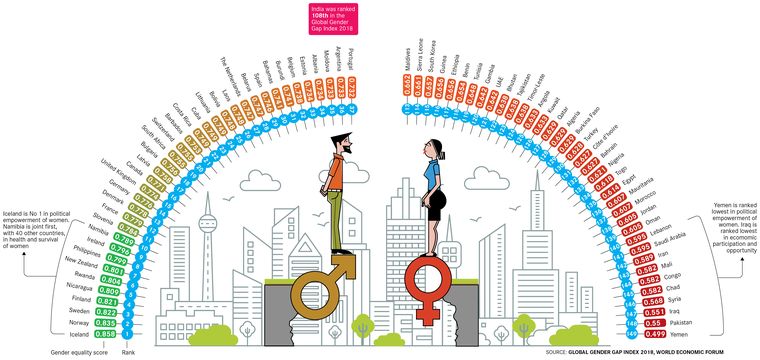There were some brief, awkward moments at the exuberant trailer launch of Mission Mangal, the new Akshay Kumar movie.
Mission Mangal has five female actors playing ISRO scientists who helped launch India’s Mars Orbiter Mission. All five of them were on the dais at the trailer launch with Kumar and two other male actors. The superstar kept on about how he had just a minor role, how the film actually belonged to the talented ladies, and how its plot and casting delivered a big message about empowering women.
Then came a searching question from a woman journalist: If so, why did Kumar’s face take up half the film’s poster, with five female faces clubbed together in the remaining half?
A hush descended. Caught off guard, Kumar tried to prevaricate and said they were all happy about the way the poster was designed, even though the film belonged to the women. Vidya Balan, one of the lead stars, tried to joke away the awkwardness saying Kumar’s face dwarfed theirs because “it is men who are from Mars”.
Another actor, Taapsee Pannu, later shared a more insightful thought. “The problem is not from this end (the poster),” she said. “Star value is a brutal truth that we need to accept. Be the reason to change this truth.”
The truth is that market pressures have only added to the odds stacked against women. According to a recent survey by the job portal MonsterIndia.com, skilled female workers in India earn 19 per cent less than their male counterparts. That is, if a man gets paid Rs200 to drive a cab, a woman would get only Rs162. In a highly skilled occupation, the pay gap goes up to 30 per cent, and it gets starker in Bollywood and big business.
Also read
- Indices: Where India stands in global rankings
- India's demography: All's not well
- Climate change performance index: India rank 11
- Poverty index: India rank 49
- Health care: India needs more doctors
- India needs to spend more to educate its people
- Human rights a messy issue in India
- Liveability index: No Indian city in top 100
In India, it is even unhealthy to be a woman. According to the World Economic Forum (WEF), India is the third-lowest in the world in women’s health and survival, and has been the world’s least improved country on these yardsticks in the past 10 years.
India is fast bridging the gap in other areas, though. Women now have more opportunities than ever to choose their profession and start businesses. WEF says India has done extremely well in empowering women politically, as it has bridged 40 per cent of the gender gap on that sub-index. India also has the world’s second highest number of women—after the US—who specialise in artificial intelligence and machine learning.
India’s space missions themselves offer a measure of how far the ladies have come. It was in 1982 that one of the early batches of women engineers joined ISRO, when there were only a few women staff, let alone techies, in the organisation. Anuradha T.K., who was part of that batch, is now the senior-most scientist specialising in sending communication satellites into space.
“Today, more than 25 per cent of ISRO’s 16,000 employees are women and we no longer feel special,” she said in 2016, after she helped launch the Mars Orbiter Mission. “You don’t get any special treatment because you are a woman; you are also not discriminated against because you are a woman. You are treated as an equal here.”
Gender justice is not rocket science, after all.


